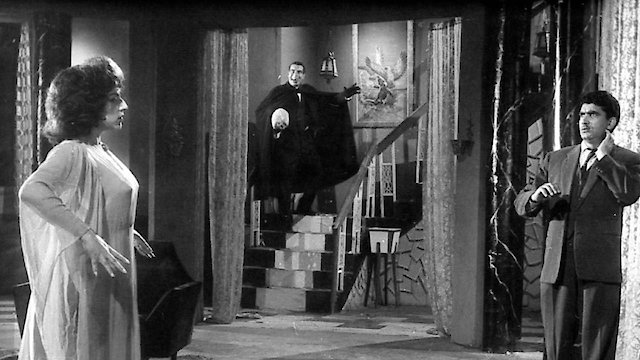
Zinda Laash
Where to Watch Zinda Laash

Zinda Laash (1967) is a unique and iconic entry in the world of South Asian cinema, particularly in the horror genre. Directed by Khwaja Sarfraz, this Pakistani film, also known as The Living Corpse in its English-language release, is notable for being one of the country's first forays into the horror genre. It tells a chilling tale of science gone wrong, dabbling in themes of immortality, the supernatural, and the dark side of human obsession.
The story of Zinda Laash revolves around Dr. Aqil Harker, played by Rehan, a brilliant yet eccentric scientist who is deeply engrossed in his experimental work. His obsession knows no bounds as he incessantly seeks the secret to immortality, driven by the conviction that science can unlock the mysteries of eternal life. The narrative takes a dark turn when his experiments lead to the creation of a horrifying elixir.
Yasmeen Shaukat stars as the lead female protagonist, delivering a compelling performance that perfectly complements the film's eerie atmosphere. Her character is integral to the story, as she becomes entwined in the gruesome aftermath of Dr. Aqil's misguided pursuits, providing both a grounding presence and a necessary human element to the chilling narrative.
Deeba Begum also plays a crucial role, showcasing her versatility as an actress in a performance that remains memorable for its intensity and depth. Alongside her, Habibur Rehman provides a solid backbone to the unfolding horror, contributing to the film's underlying commentary on the consequences of toying with nature and the human soul.
As the plot thickens, viewers are taken on a macabre journey through gothic settings and ominous scenes, punctuating the film with nail-biting suspense. The protagonist's ungodly creation invokes fear and fascination, with haunting cinematography and unsettling special effects for the era pushing the boundaries of traditional horror narratives.
The visual language of Zinda Laash is a hodgepodge of gothic horror tropes, accentuated with low-key lighting and stark contrasts that heighten the sense of dread and suspense. The film deftly utilizes shadow and light to create a brooding atmosphere that is both captivating and unnerving. Iconic scenes are burnished into the viewer's memory, employing practical effects and makeup that were groundbreaking for the Pakistani film industry at the time.
Moreover, Zinda Laash draws inspiration from classic horror tales, especially the legend of Dracula. The film bears certain resemblances to vampire mythology, featuring thematic elements such as the craving for blood, the quest for eternal life, and the supernatural powers bestowed upon the creature that Dr. Aqil inadvertently creates.
Not content with mere shock value, Zinda Laash is laden with subtext and explores deeper themes of human nature. It touches on the ethical dilemmas inherent in scientific experimentation, questioning the limits of human ambition and the morality of seeking to defy the natural order. This inner conflict is portrayed with gusto, engaging the audience in a philosophical debate that transcends the typical horror story scaffold.
The score of the film is another of its strengths, with chilling music that adeptly augments the tension and terror. The sound design is meticulously crafted to complement the visuals, ensuring that every creak and whisper contributes to the unnerving ambiance the film so effectively maintains throughout its runtime.
For its time, Zinda Laash was a daring production, pushing the envelope of the horror genre in Pakistan's cinema. It confronted censorship boundaries and wrestled with societal norms, threading the needle to deliver a tale that was as much a product of its time as it was a timeless meditation on the darker aspects of human aspiration.
The film has since garnered a cult following, appreciated for its pioneering spirit and its ability to deliver genuine scares. Its influence can be seen in later South Asian and international horror films, with many cinephiles and critics referring back to it as an early example of the horrific and macabre potential of Pakistani cinema.
In conclusion, Zinda Laash stands out as a cornerstone of vintage horror, a film that carved its niche in a genre that was largely untapped in Pakistani cinema during the 1960s. It is a testament to the creative spirit that challenged the norms of its time and provided a template for future storytellers eager to explore the shadowy corners of the human psyche. With its compelling performances, atmospheric direction, and thought-provoking narrative, Zinda Laash remains a fascinating watch for enthusiasts of classic horror cinema.
Zinda Laash is a Crime, Drama, Horror movie released in 1967. It has a runtime of 103 min. Critics and viewers have rated it moderate reviews, with an IMDb score of 5.1..
